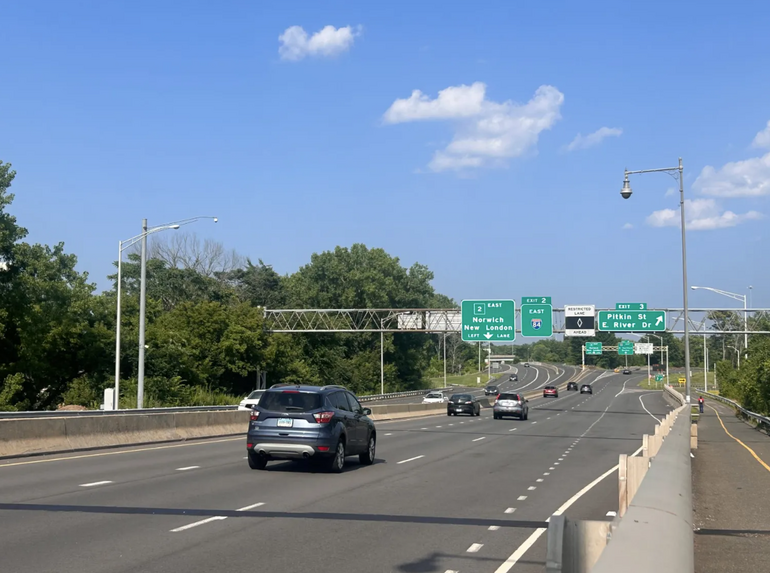Processing Your Payment
Please do not leave this page until complete. This can take a few moments.
-
News
-
Editions
-
- Lists
-
Viewpoints
-
HBJ Events
-
Event Info
- 2024 Economic Outlook Webinar Presented by: NBT Bank
- Best Places to Work in Connecticut 2024
- Top 25 Women In Business Awards 2024
- Connecticut's Family Business Awards 2024
- What's Your Story? A Small Business Giveaway 2024 Presented By: Torrington Savings Bank
- 40 Under Forty Awards 2024
- C-Suite and Lifetime Achievement Awards 2024
- Connecticut's Health Care Heroes Awards 2024
-
-
Business Calendar
-
Custom Content
- News
-
Editions
View Digital Editions
Biweekly Issues
- April 29, 2024
- April 15, 2024
- April 1, 2024
- March 18, 2024
- March 4, 2024
- February 19, 2024
- February 5, 2024
- January 22, 2024
- January 8, 2024
- + More
Special Editions
- Lists
- Viewpoints
-
HBJ Events
Event Info
- View all Events
- 2024 Economic Outlook Webinar Presented by: NBT Bank
- Best Places to Work in Connecticut 2024
- Top 25 Women In Business Awards 2024
- Connecticut's Family Business Awards 2024
- What's Your Story? A Small Business Giveaway 2024 Presented By: Torrington Savings Bank
- 40 Under Forty Awards 2024
- C-Suite and Lifetime Achievement Awards 2024
- Connecticut's Health Care Heroes Awards 2024
Award Honorees
- Business Calendar
- Custom Content
Report: CT sees sharp increase in greenhouse gas emissions
 DONATO DAVIS / CT MIRROR
Vehicles move along the I-84 East corridor into East Hartford.
DONATO DAVIS / CT MIRROR
Vehicles move along the I-84 East corridor into East Hartford.
Connecticut is struggling with its greenhouse gas emissions, according to a new report.
Data from the state’s annual Greenhouse Gas Emissions Inventory, released Thursday, shows that there was a sharp increase in GHG emissions — the primary cause of planet-warming climate change — of 6% from 2020 to 2021. The two-year increase from 2020 to 2022 was 7%. It mirrors a similar increase of overall greenhouse gas emissions in the federal inventory released by the Environmental Protection Agency recently.
In both cases, part — though not all — of the increase can be attributed to the economy ramping back up after the shutdown during the first year of COVID. And in both cases, the transportation sector is responsible for the largest amount of emissions.
In Connecticut, transportation emissions have increased sharply since 2020. Between 2021 and 2022, they increased 4% and are now only 1% below transportation emissions in 1990, one of the benchmarks used for comparison in the state’s Global Warming Solutions Act.
In terms of percentages, transportation in Connecticut accounts for 42% of total emissions, far more pronounced than nationally, where it is 28%. Transportation emissions in Connecticut are also more than the combined emissions of the next two sectors — heating in residential and commercial buildings — at 21% and 13% respectively. Emissions in both those sectors also increased in 2021 and 2022.
On the other side of the ledger, there was a continued and sharp decline in emissions from the electric power sector; 2022 levels were 16% below 2021 levels and down 80% from their 1990 level. This drop is due to lower demand, much of it the result of increased amounts of rooftop solar as well as increasing amounts of renewable energy on the electric grid.
The state did meet its 2020 mandate to reduce economy-wide GHG emissions 10% from 1990 levels. But it has been backsliding since then and is way off target to meet its next metric – 45% below 2001 levels by 2030.
“We need to step up the pace, we need to accelerate the rate of reductions of greenhouse gas emissions if we are going to meet the goals that the legislature has established in the Global Warming Solutions Act,” said Department of Energy and Environmental Protection Commissioner Katie Dykes during Thursday’s announcement. “Achieving that target will require an average reduction of about 1.1 million metric tons of carbon dioxide each year between 2022 and 2030. Connecticut has not yet achieved a rate like that to date. We will also need to substantially increase the pace of reductions over the next five years to meet that 2030 goal.”
Efforts in Connecticut to deal with the biggest contributor — transportation emissions — have been repeatedly derailed by state legislators. The most recent failed attempt involved adopting strict California standards for cars and light duty trucks that would phase out the purchase of new gasoline motor vehicles by 2035 and also set zero-emission standards for heavy-duty vehicles.
The state now follows looser federal standards, and the only legislation on the issue this session would revise and coordinate programs and infrastructure for zero-emission vehicles.
Dykes pointed out, as she has repeatedly in the last several years, that big emission declines will be needed in transportation.
“We know what we need to do to accomplish that. The increased adoption of zero-emission vehicles is going to be really important. We also know that we’re driving more than ever,” she said.
The report pointed out that reductions in emissions “through improved fuel economy in motor vehicles have been almost entirely offset by increased emissions from driving more.”
Legislative opposition to widespread EV adoption — both Republican and Democratic — has focused on the cost of EVs and the lack of charging infrastructure, especially in rural areas.
The inventory release comes during a week the Biden administration has issued a series of emissions-related initiatives. Today it unveiled its latest attempt to limit emissions from coal power plants. That may seem to be the least of Connecticut’s concerns, with the last coal-fired power plant in New England — the Merrimack Station near Concord, N.H. — set to close in 2028.
But emissions from coal plants elsewhere in the country have long had an impact on Connecticut’s air quality from ozone and other pollutants, as well as GHGs.
The American Lung Association’s 25th annual State of the Air Report, released Wednesday, found that, once again, Connecticut received an F grade in four of its eight counties for high ozone levels, and that Fairfield County has the worst ozone pollution east of Texas.
The Biden administration on Thursday also unveiled a series of initiatives to streamline transmission approvals and expansion, which will be needed in New England as more electricity is required for EVs and forms of heating such as heat pumps.
Connecticut recently joined with its neighboring states to apply for federal funding for two major transmission initiatives. The administration also announced a new five-year offshore wind leasing schedule that will include several areas in the Atlantic off New England and New York. And this week all states learned they would receive funding to expand solar adoption, specifically aimed at low-income populations. Connecticut will receive more than $62 million of the $7 billion funding pot.

2022 Giving Guide
This special edition informs and connects businesses with nonprofit organizations that are aligned with what they care about. Each nonprofit profile provides a crisp snapshot of the organization’s mission, goals, area of service, giving and volunteer opportunities and board leadership.
Learn more
Subscribe
Hartford Business Journal provides the top coverage of news, trends, data, politics and personalities of the area’s business community. Get the news and information you need from the award-winning writers at HBJ. Don’t miss out - subscribe today.
Subscribe
2024 Book of Lists
Delivering Vital Marketplace Content and Context to Senior Decision Makers Throughout Greater Hartford and the State ... All Year Long!
Read Here-
2022 Giving Guide
This special edition informs and connects businesses with nonprofit organizations that are aligned with what they care about. Each nonprofit profile provides a crisp snapshot of the organization’s mission, goals, area of service, giving and volunteer opportunities and board leadership.
-
Subscribe
Hartford Business Journal provides the top coverage of news, trends, data, politics and personalities of the area’s business community. Get the news and information you need from the award-winning writers at HBJ. Don’t miss out - subscribe today.
-
2024 Book of Lists
Delivering Vital Marketplace Content and Context to Senior Decision Makers Throughout Greater Hartford and the State ... All Year Long!
ABOUT
ADVERTISE
NEW ENGLAND BUSINESS MEDIA SITES
No articles left
Get access now
In order to use this feature, we need some information from you. You can also login or register for a free account.
By clicking submit you are agreeing to our cookie usage and Privacy Policy
Already have an account? Login
Already have an account? Login
Want to create an account? Register
Get access now
In order to use this feature, we need some information from you. You can also login or register for a free account.
By clicking submit you are agreeing to our cookie usage and Privacy Policy
Already have an account? Login
Already have an account? Login
Want to create an account? Register






0 Comments